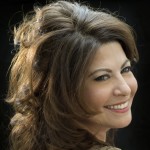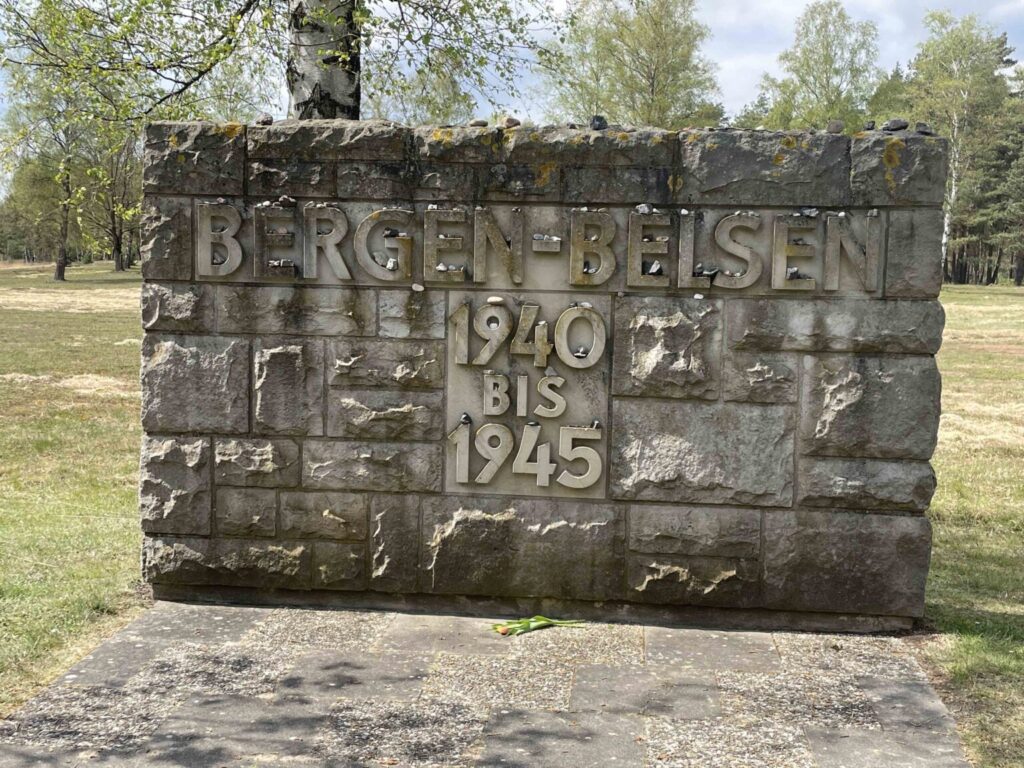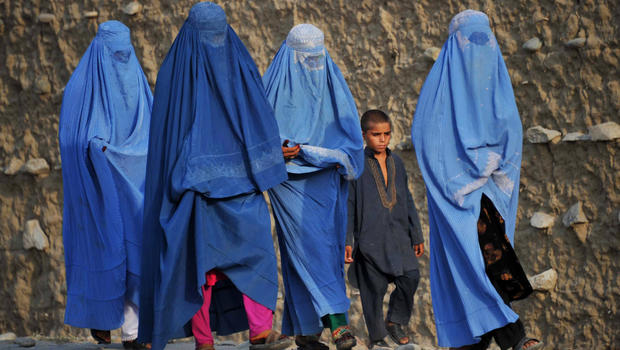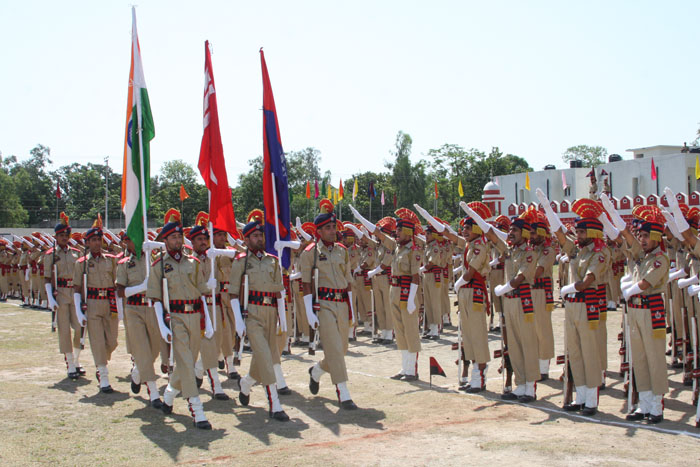VOICES FROM THE REGION#05: 15 June 2022

Guest Writer: Heidi Kingstone
The war in Ukraine and the atrocities committed there, with accompanying claims of genocide and Nazism, have made remembrance of the Holocaust more relevant than ever. We are confronted by perhaps the most serious challenge to the international rule of law since the end of World War II and, unfortunately, we are also confronted with atrocities committed by Vladimir Putin’s Russia on a level we have not seen in Europe in the intervening 77 years.
This year’s Russian invasion of Ukraine is the most brutal and largest military operation since 1945 and the first time in the twenty-first century that a superpower has unleashed its power on a neighbouring country.
On 8 May, I was starkly reminded of this gruesome reality while attending a double commemoration at the memorial site of the Nazi concentration camp of Bergen-Belsen in northern Germany.

(Photo Credit: Heidi Kingstone)
The ceremony there that day marked the 77th anniversary of both the liberation of that camp by British troops on 15 April 1945, and the end of World War II twenty-three days later.
The British officers and soldiers who entered what almost immediately became known as the “Horror Camp” were shocked by the incomparable human misery they found there. The photographs they took of heaps of dead, naked, skeletal bodies, at least 10,000 corpses stacked and littered throughout the camp, mixed with approximately 58,000 half-dead, starving, and diseased men, women, and children who were themselves no more than skin and bones, mostly Jews but also Roma and Sinti, Prisoners of War, political opponents and homosexuals. The camp is infamous for many things. This is where teenage diarist Anne Frank and her sister, Margot, died from the raging typhus epidemic in February, weeks before liberation.
For decades after, in the UK and elsewhere, Belsen symbolised the enormity of the crimes against humanity that the Nazis had committed.
In 1945, the Russians and the Ukrainians as Soviets were allied with the US and the UK in the war against Nazi Germany. This year, Russian and Belarusian diplomats were asked by the Lower Saxony Memorials Foundation not to attend the ceremony at Bergen-Belsen.
As I walked on the landscaped space between no-longer-existing barracks at Belsen, a man stopped to ask if we had any connection to Belsen. My guide was the prominent genocide law scholar, human rights activist, poet and author, Professor Menachem Rosensaft. Yes, he did have a connection, he told the young British man. He was born in Belsen in 1948 after it had become a Displaced Persons camp. Did the young man have any connections asked Professor Rosensaft, which started a memorable conversation? “Yes,” he replied. “My grandfather was one of the ambulance drivers when the camp was liberated.” “Under (Mervyn) Gonin?” asked Rosensaft, referring to Lt. Col. Mervyn Gonin, who commanded the British 11th Light Field Ambulance unit and led the first full medical unit into Belsen just after liberation. “Yes,” answered the young man who returns to Belsen every year. Rosensaft, whose parents were liberated at Belsen, said, “I owe my life to your grandfather. Thank you.”
Originally intended as an exchange camp for privileged prisoners and built to house no more than 8000 prisoners, Belsen was considered, “not that bad,” until the fall of 1944, explained Professor Rosensaft, but as the Red Army moved rapidly westward across Poland, the Nazis embarked on an insane mission. Tens of thousands of inmates of the German death and concentration camps in Poland were taken on death marches and transported to camps in Germany, including Belsen.
During the winter of 1945, conditions became horrific, with close to 60,000 prisoners crammed together. The disease was rife – typhus, tuberculosis, dysentery, inmates were covered with lice, too weak and sick to even turn over to vomit, they urinated and defecated where they lay, and with no lavatory facilities, “the compounds were absolutely one mass of human excreta,” said Brigadier H. L. Glyn Hughes, the Deputy Director of Medical Services of the British Second Army. In the first week after the liberation, 9000 people died.
Today, mounds of human remains, covered in grass and marked with stone numbers of the number of the dead interred, are scattered on the grounds of what had been the concentration camp. The fields and monuments are surrounded by forests and the sounds of birds. You have to use your imagination to visualise the watch towers, the rows of barracks, the terrified prisoners, and the soldiers in their Nazi uniforms as they transferred into a place where the dead and dying could not be told apart. Over the course of the first three weeks after liberation, the victims had to be buried anonymously in mass graves.
As we drove past what had been the cinema in a nearby Wehrmacht base that housed the camp’s SS personnel – and that became the Belsen Displaced Persons camp – Professor Rosensaft started telling the story of the famous Hollywood actress, Marlene Dietrich, who had left Germany in 1930 and became a symbol of German anti-Nazi opposition, performing during the war for Allied troops. In the summer of 1945, she returned to Germany and searched for her sister. When told she was at Belsen, Marlene Dietrich first thought she had been a prisoner there. What she discovered was that her sister and her husband had run the cinema for the Nazis. Dietrich, who was one of the highest-paid actresses in the world, made sure her sister was looked after, but never publicly acknowledged her existence.
Liberation, as Professor Rosensaft points out, is somewhat of a misnomer. The Germans were terrified that the typhus-ridden prisoners might escape and spread the disease across the Lower Saxony heath. So, they engaged in truce negotiations with the British, turning over Belsen to them on 15 April, but not taking full control over the camp until two days later on 17 April.
It was during these first days that Brigadier Hughes met a young Polish dentist, who had saved many lives during her time in Auschwitz. Hadassah (Ada) Bimko was deported from her home in Sosnowiec, Poland, with her family, arriving at Auschwitz-Birkenau on the night of 3-4 August 1943. Her parents, first husband, and five-and-a-half-year-old son were sent directly to their death in one of the gas chambers. Because of her medical training, the notorious SS doctor Josef Mengele, the Angel of Death, assigned her to work in the Birkenau infirmary, where she saved the lives of countless women by performing rudimentary surgeries and sending them on work detail in advance of gas chamber selections by the SS. On 14 November 1944, Ada Bimko, who had studied medicine at the University of Nancy, France, was sent to Bergen-Belsen, where she and a group of Jewish women inmates kept 149 children alive until the camp was liberated.
When Hughes met Bimko, he put her in charge of organising a team of a few doctors and several hundred volunteers from among the survivors to help care for all the camp’s wounded alongside the British military medical personnel. Lt. Col. Gonin said that Dr. Bimko “was the bravest woman he had ever known,” and it is with great pride that Professor Rosensaft tells the story of his remarkable mother.
The Holocaust still casts a shadow over the modern world. We live in an age when ethnic, religious, and racial hatreds are again commonplace around the world. “The demons of history have returned,” warns Poland’s prime minister in a guest essay for The Economist. “We are witnessing genocide again. In this environment, the West has acted like a frog in water brought gently to the boil. It has not reacted even as Russia has added heat.”
Today’s Germany is not the Germany of 1933 or 1945. Ukrainians can flee Russian soldiers and find refuge in Poland, the UK, Canada, in the US as opposed to the Jews who found all the borders closed: They couldn’t escape. The Jews were someone else’s problems, and no one’s priority, but today much of the world is united in support of Ukraine; the European Union, the NATO members, and countries bordering on Ukraine have acted appropriately despite the unfolding tragedy. If the mass graves of Belsen have a moral imperative, it is a plea not to let this happen again.
In February 2022, the prosecutor at the International Criminal Court at The Hague opened a case saying there was “a reasonable basis to believe that both alleged war crimes and crimes against humanity have been committed in Ukraine.”
We tend to think that genocide is the worst crime imaginable. US President Joe Biden has accused Vladimir Putin of committing genocide in Ukraine, saying that the Russian president is, “trying to wipe out the idea of even being Ukrainian”.
Emphasising the horrific nature of the crimes being committed in 2022 is essential but there is a debate whether what is happening in Ukraine constitutes genocide. Professor Rosensaft is General Counsel and Associate Executive Vice President of the World Jewish Congress, a lecturer in law at Columbia Law School, and an Adjunct Professor of Law at Cornell Law School. He is also the newly elected chairman of the Advisory Board of the Lower Saxony Memorials Foundation. “The concept has developed that if it’s not a crime of genocide then it’s not as serious, which is ridiculous,” Rosensaft says. “Does it matter if it’s a crime against humanity and not genocide?”
In 1941, Winston Churchill called the atrocities that were perpetrated by the Nazis throughout Europe, “a crime without a name.” Viewing atrocities through the prism of genocide may be a victory for Raphael Lemkin, the Jewish lawyer who created the term “genocide” in 1944, but a crime against humanity as defined in the charter of the International Military Tribunal at Nuremberg is equally heinous. “We do not do the cause of justice any favors by minimizing the severity of crimes that do not follow the narrow legal definition of genocide,” Rosensaft argues with conviction.
Genocide is a legal term defined under the legal convention and is thus a narrow term that requires the “intent” to destroy in whole or in part a national, ethnic, religious, or racial group. It cannot be a byproduct. Professor Rosensaft asks, “does it matter? No one has ever said, I feel better knowing that I am being killed because it’s ‘only’ a crime against humanity and not genocide.” Prior to 1945, there was no system for prosecuting either of these crimes, which hadn’t been codified under international law. Indeed, the Genocide Convention was only adopted by the UN General Assembly in 1948 and did not enter into force until 1951.
A critical difference between 1939-1945 and today is that while five million Ukrainians have fled their country, they, unlike the Jews of World War II, have found refuge in homes and cities around the world.
Speaking beside the Jewish Monument of Belsen at the commemoration on May 8th, Rosensaft said:
“As we look out at the Belsen mass graves, as we remember the horrors that occurred here more than seven decades ago, we cannot be deaf or blind to the atrocities that are being committed today, in 2022.”
“Once again, civilians – men, women, and children – are terrorized, brutalized, and murdered on a scale and with a ferocity we have not witnessed in Europe since the end of World War II. Once again, corpses are strewn among the living. Once again, mass graves have become the final resting places of nameless victims of barbarity…
“Still, Ukraine is not the Holocaust, and 2022 is not 1939-1945. To be sure, the killers are still vicious killers, but this time, the world is watching and reacting in real-time.”
The victims of the war in Ukraine were indeed remembered at Belsen this year. Belsen not only symbolises to the world the unimaginable horrors that the Nazis had committed, but its mass graves constitute a warning that the international community ignores at its peril. But, as Ukrainian President Volodymyr Zelensky said, “We won then. We will win now.”
—
Heidi Kingstone is a freelance journalist. Her book, Dispatches from the Kabul Cafe, was published in May (Advance Editions 2015). Views expressed in the piece are that of the author, and not of Mantraya.




